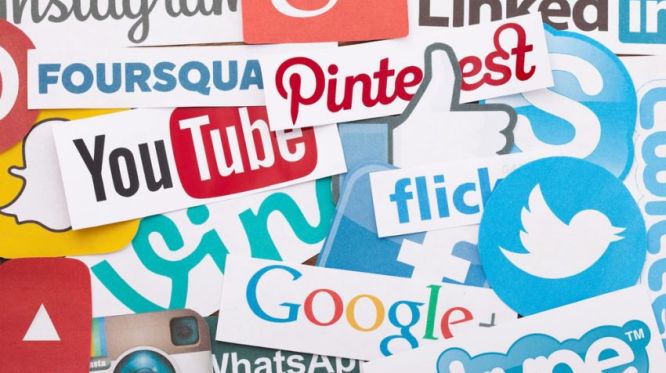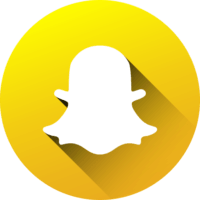Report: Government is underutilizing social media

Government is underutilizing social media
GOVERNMENT AGENCIES have been slow to adapt to the way Americans are switching to social media, missing out on or underutilizing a powerful and efficient solution for delivering information and engaging the public.
This assessment comes from a new report issued in September 2018 by Hootsuite, the social media platform manager. In The State of Social Media in Government in 2018, Hootsuite’s authors detail how social media behavior is changing government communications. And it offers recommendations to media managers at all levels of government on how to take advantage of the changing landscape.
The American public’s use of social media has become ubiquitous. But the Hootsuite report warned that many government agencies are in danger of being left behind because of their dependency on legacy media (radio, television and print) at a time when use of those platforms is on the wane.
Social media, the authors contend, provide government agencies with the tools they need to reach their various publics in a timely manner, on a one-to-one basis, and at a fraction of the cost of traditional means. Beyond delivering messages like, “Only you can prevent forest fires,” today’s social media also provide government agencies with the opportunity to engage their publics by starting conversations, improving communications and receiving feedback.
Breadth of federal agency use of social media is unclear
In response to a 2016 request from Sen. Mike Enzi (R-Wyo.), the Government Accountability Office issued a reportthat acknowledged the rapid change in the federal government’s ability to publicize information. But it determined the total scope of those activities is largely unknown, including the government’s use of social platforms.
The GAO analysis found agencies spent $1.5 billion annually on advertising and public relations contracts, but it shed little light on social media usage. The report did determine ten agencies were responsible for 95 percent of the spending, with the Defense Department using 60 percent of the total.
GAO also reported $500 milion of that total was spent annually on 5,000 federal employees classified in the Public Affairs occupational series. But it admitted those numbers did not reflect the fact that many government workers outside of the public affairs specialties were posting social media as part of their jobs.
GAO said much of the government’s effort was missing the mark by not shifting their budgets and personnel away from traditional media platforms. That still may be true. While the expertise and tools used by government agencies to deliver their message are still in place, the use of social media is becoming entrenched.
“A lot of government agencies are really embracing social media as ways to engage and interact with their constituents, but we actually use the entire spectrum of communications channels, and that’s the sign of a good communication program,” said John Verrico, chief of media relations for the Science and Technology Directorate in the Homeland Security Department.
“We still use traditional press releases to send out to traditional media. We target mainstream media for some stories. We target a select trade press for other stories. We want to make sure that we’re hitting the appropriate audiences,” said Verrico, who is also a former president of the National Association of Government Communicators. “Not all of our stories need to get to everybody on the planet.”
Will artificial intelligence replace many federal workers?
Here’s how government agencies are using social networks

With 2 billion users, Hootsuite predicts governments will be using this social media giant to an even greater extent in 2018. Mobile video is Facebook’s biggest bet in 2018, followed by a new Explore tab, the use of AI to encourage more people to join the 100 million people using Groups and the acceleration of organic and paid Messenger interactions.

Led by President Donald Trump, government officials are speaking directly to the people via Twitter. In 2018, Hootsuite said Twitter will double down on its video strategy, expanding into more premium content, launching innovative live video segments and applying machine learning to help personalize video discovery.

The consensus among government agencies that have a profile on Snapchat is that it can be used both as a unique storytelling platform and as an interesting way to increase engagement at events. In 2018, Hootsuite projects that Snapchat will continue to jostle for the position as the go-to-platform to reach younger demographics. We’ll likely see Snapchat become more of a niche social network.

Instagram is not for every government agency — but there are some solid use cases. NASA uses it to showcase beautiful images of earth from space. The Transportation Security Administration even uses it to educate travelers on what they can and cannot travel with, and to engage with citizens who have questions. Instagram’s user growth sped up in 2017, adding more than 200 million new users. In 2018, Hootsuite predicts we’ll see mobile video engagement continue to rise.

In 2018, agencies will focus on using LinkedIn to enhance their employer brand and attract fresh talent. Now reaching more than 530 million professionals, LinkedIn is an important platform for government agencies to strengthen their online presence, control their story, and engage their audience wherever they are.

With 1.6 billion users, YouTube will expand their mass-market reach in 2018 with original social TV programming from YouTube Red, live broadcasting, and YouTube TV. Mobile remains key, but YouTube also saw a 70 percent year-over-year increase in living-room viewing.
Take advantage of what social media has to offer
Unfortunately, Hootsuite found many agencies still use social platforms merely as digital notice boards, and think of social media to “broadcast” their messages.
While there is still a place for “telling our story,” social media are opening the door for agencies to engage with their publics. But there’s a lot of room for improvement.
A Statista study, quoted in the Hootsuite report, showed government ranks third from bottom for social media engagement. Even more stunning was a survey showing fewer than 1-in-10 people reported receiving a response to their queries from a government agency via social networks. The public, it concluded, was being ignored by those there to serve them.
Hootsuite’s report does provide some hope for government media managers.
Here are some of its recommendations to maximize their media investments and increase the efficiency of their public outreach efforts:
- Drive governmentwide efficiencies with social media
Agencies are under pressure to identify opportunities where new technologies can result in increased efficiency and budgetary savings. Current practices reveal the extent to which departments spend time and resources on operations that could be simplified or even automated through the adoption of new technologies like coordinated social media and AI. - Restore declining trust with peer influence
Embodying a peer-to-peer engagement model (rather than an agency-to-citizen one) is essential to build trust through social media. With the right mission and messaging in place, agencies can empower their employees to use their unique voice to bridge the divide between people and government. - Combat brain drain with social-first recruitment
Most employers and recruitment agencies today are using social media to source the right candidates. But candidates are also using social media to get a feel for their prospective employer’s culture. By taking control of your agency’s online presence, you can start to draw in the ideal candidates for your agency. - Rethink crisis communications in the wake of hurricanes and wildfires
Government agencies and emergency response teams need to speak directly to the people via the most efficient channels: social media. A strong critical response plan, directed through social media, can be a mitigating factor in containing a crisis, curtailing rumors —and can save lives. - Build compliance into your social media strategy
In 2017, the social activity of some public officials sparked an ethical debate that resulted in several public hearings and rulings. In their efforts to use social media to meet citizen demand for more personal forms of engagement, individuals as well as agencies inadvertently opened themselves up to public feedback and criticism.
A recent article suggested government go a step further and consider social media as a critical national infrastructure.
“As government social media become an increasingly popular way to disseminate information with the general public, they also become vulnerable to security threats,” Shay Nahan at CyberArk wrote in Information Security Buzz News.
Nahan said social media platforms must be hardened to prevent hackers from using these accounts to spread false information.
“There’s always a chance that somebody’s going to post something that is contrary to the official position of the government,” Verrico said. “But that’s the chance we take when we want to actually have a full, open and honest interaction.”

John
If you want to talk about anything to so with getting more customers, give John a call 0414 955 743 – advice is totally free of charge.



